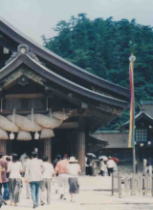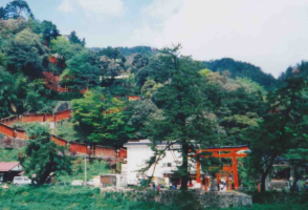Visit A Dental Office Japan has some information of your finest dentist in Japan
以下をご確認下さいクッキーについての同意並び欧州居住者向けプライバシーポリシー
Iwami Ginzan Silver Mine And Its Cultural Landscape
Iwami Ginzan Silver Mine and its Cultural Landscape was registered as the World Heritage by UNESCO in 2007. It was the 14th Heritage in Japan and the first heritage of mining site in Asia. Iwami Ginzan Silver Mine and its Cultural Landscape was praised that the management of the mining had been environmentally friendly to coexist between mining and nature, so Iwami Ginzan Silver Mine and its Cultural Landscape could be the World Heritage.In Edo period from 17th to 19th century, Iwami Ginzan Silver Mine was the most important silver mine for Tokugawa Shokunate, therefore it was ruled by the Shogunate directly. Iwami Ginzan Silver Mine was found in 14th century, and Toshisada Kamiya adopted a new method for Smelting Silver in 1526, then the amount of production had increased and the importance of the mine also had rised up. The time was just in Sengoku Period (the Warring States Period), the big names of Sengoku Busho such as Ouchi Clan, Amako Clan, Mouri Clan, Toyotomi Clan and Tokugawa Clan had taken part in the furious battles targeting the capture of Iwami Ginzan Silver Mine. After Choan Okubo became the director of the mining in 1601, the production of silver from the mine sharply increased, as the ultra large amount of the silver production, Europeans heard the name of Iwami Ginzan Silver Mine and it produced one-third of the world’s silver production at its peak. At that time the towns around the mine had great population and was extrodinally frourished. Iwami Ginzan Silver Mine had been one of the world’s most prominent silver mines for 400 years. Late 17th century, the amount of silver production gradually fell dwon, and Iwami Ginzan Silver Mine closed completely in 1920.
It became a UNESCO World Heritage Site in 2007, the first mine being registered in Asia. The site also includes the transportation routes, ports, mining towns and hot springs around the mine. In addition, although the mining industry had produced much silver, Iwami Ginzan Silver Mine gave little damage to nature, it was very environmentally friendly, so the landscapes around the mine keep remnant of the days Iwami Ginzan Silver Mine flourished.
Why don't you visit Iwami Ginzan Silver Mine? You could learn a lot Japanese culture and history from the mine.
参考
大田市ホームページ
大田市観光協会ホームページ
島根県ホームページ
島根県観光連盟ホームページ
中海・宍道湖・大山圏域観光連携事業推進協議ホームページ
デジタル大辞林
ブリタニカ国際大百科
ウィッキペディア
Visit A Dental Office Near Iwami Ginzan Silver Mine

Kokoro Dental Clinic Masuda
Masuda CityVisit Events, Landmarks and Areas Near Iwami Ginzan Silver Mine
Around Iwami Ginzan Silver Mine at Ohda City, there are of course many landmarks to visit, and also Shimane Prefecture has also many other wondergul landmarks to visit, Izumo Taisha Grand Shrine in Izumo City, Sesshu Gardens in Masuda City, Iwami Ginzan Silver Mining in Ota City and so on. Why don't you visit Shimane?


Areas
Landmarks and Events
- Iwami Ginzan Silver Mine and its cultural site (The World Heritage)
- Izumo Taisha Grand Shrine (The National Treasure)
- Matsuejo Castle (The National Treasure)
- Lake Shinjiko